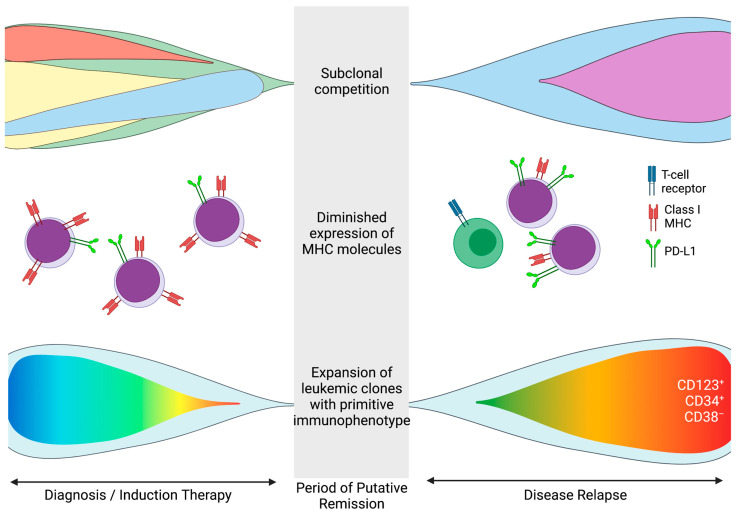Figure 2.
Mechanisms of acute myeloid leukemia relapse. The various schema depict three mechanisms of AML relapse delineated by NGS and flow cytometric techniques discussed in the text and include: (top panel) Mutational clonal heterogeneity is frequent at initial presentation. Chemotherapy-resistant subclones may persist at the time of putative remission and expand to become a dominant population at relapse. (middle panel) Downregulation of crucial MHC genes/molecules on leukemic cells (red receptors) or upregulation of checkpoint molecules (green receptors) during the course of treatment or at the time of relapse may result in more effective AML immune evasion and contribute to loss of graft-versus-leukemia recognition by donor T cells (green cells with blue T cell receptors). (bottom panel) Immunophenotyping or different-from-normal flow cytometric techniques identify leukemic populations enriched for leukemia stem cells at the time of diagnosis. At the time of relapse, expansion of clones characterized by more primitive immunophenotypic signatures (CD123+CD34+CD38−) may reflect the development of chemotherapy resistance.

